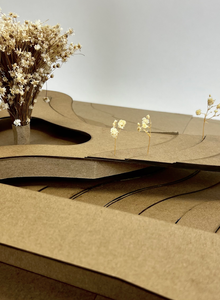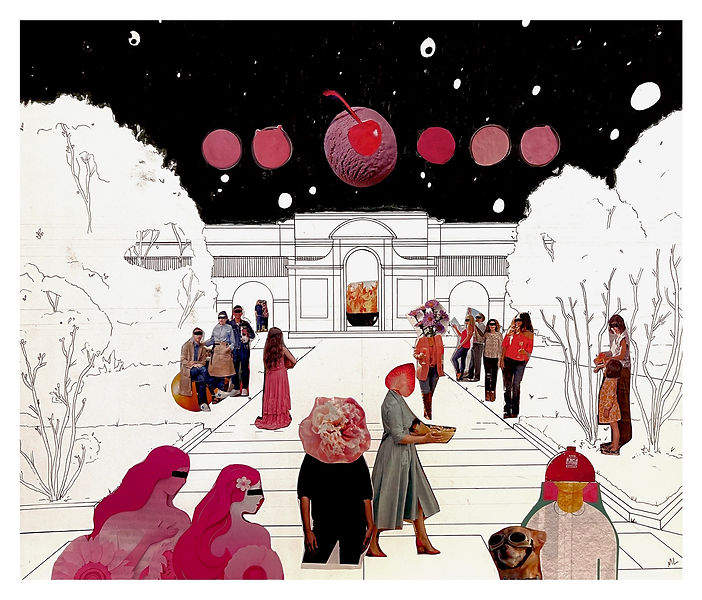LSU Bachelor's of Architecture
A Campus Medical Research Facility & Pharmacy









A Pavilion for Zydeco





An Inner-City Infill with Dovecote & Underground Hydroponics






A Case Study: RIDC Mill 19






A Mid-City Bat Conservation Intervention & Community Farm






An Installation & Collage for the Mounds at LSU
Collage for the LSU Campus Mounds (Archived by school, 2022)
Forty-four hundredths of a percent, or around one-in-227, is a ratio representative of the American Indian demographic for LSU’s spring semester. I bring this up not necessarily as a statement about the school’s admissions policy, of which I’m uninformed, but to present a snapshot of a human ecology in which we are presently embedded; something almost invisible and under constant threat of erosion. I don’t feel I’m equipped to relay a true, learned American Indian history—there are Indian mounds meters from my grandparents’ home on Bayou Dularge that I never knew were there—but the story I can tell is comprised of a few verifiable facts, faint images and recovered memories, near-and-farness of home, unconditional love. My grandpa, who worked in life as a contract welder, was a United Houma Nation tribe member. He attended a private Native American school through 8th grade; there were no public schools in the parish for Native American children until 1953. He smoked heavily and was an avid hunter. He passed away before I could understand him intellectually, but I understood his heart expertly. He sat in a white plastic lawn chair near the front door to drag. From the view of someone playing in the yard, his silhouette was cast seriously against a fence of morning glories, but his warmth rasped out in mischievous laughter as you inched closer and he had an old joke handy.
One American Indian symbol for change is a storm cloud with rain, which looks conspicuously like two mounds. Would that a storm could be a positive force for the Native communities I grew up around. Barring that—you and me.

Misc. Projects

Campus Collage 1
She wore red on the pedestal—a red dress which surged like a strong flame in a bowl of fire. She was an effigy lit. We cheered as she burned the ground, and she kicked up ash when she turned. More came, and the runway was a procession of sauntering colors that navigated through beams of light like cats across a fence near a passing train. The night was lit by six moons; the oldest, Earth’s first, was largest and hung full and centered above her. Lucia, Elaine and Theo hugged her left, and Roland and Formosa hugged her right. Eventually, opposite the pedestal, in a line ordered by age from right to left, were the five sisters of these satellites. I hoped that, guided in prayer, they could feel our reverence, though a little sadness had touched the corners of the youngest’s lips as she mouthed the words. This was the last good night of the year.